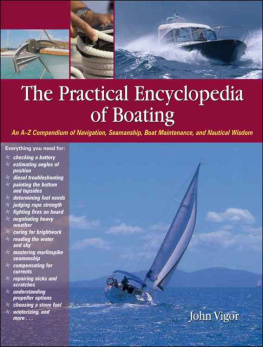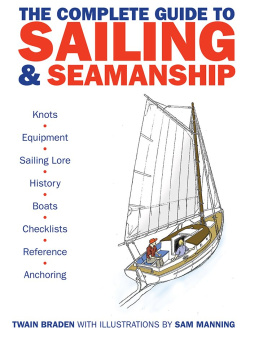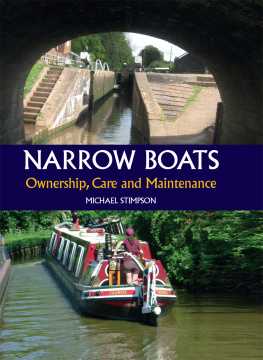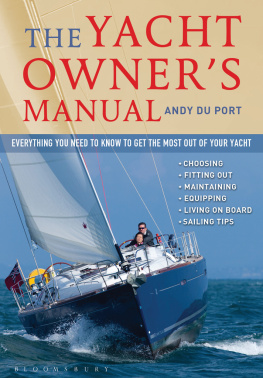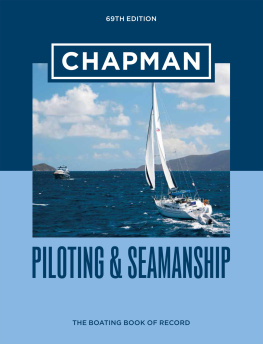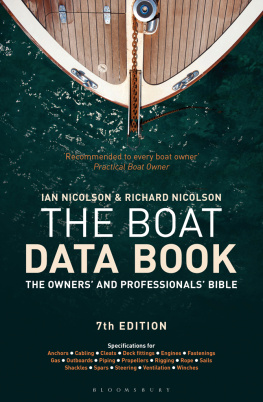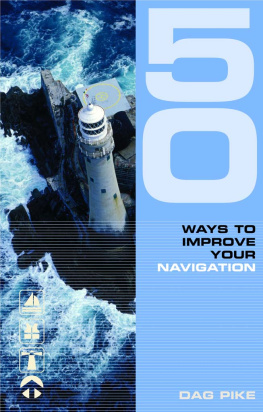The Practical Encyclopedia of Boating
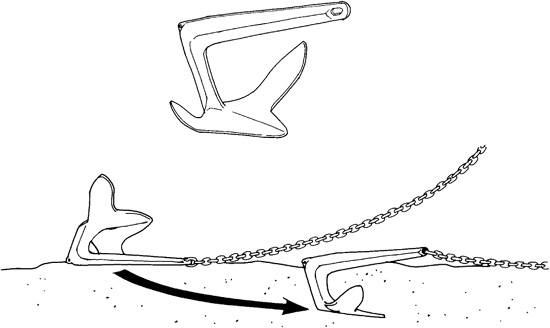
The Practical Encyclopedia of Boating
An A Z Compendium of Seamanship, Boat Maintenance, Navigation, and Nautical Wisdom
John Vigor


Copyright 2004 by John Vigor. All rights reserved. Except as permitted under the United States Copyright Act of 1976, no part of this publication may be reproduced or distributed in any form or by any means, or stored in a database or retrieval system, without the prior written permission of the publisher.
ISBN: 978-0-07-159624-4
MHID: 0-07-159624-0
The material in this eBook also appears in the print version of this title: ISBN: 978-0-07-149888-3, MHID: 0-07-149888-5.
All trademarks are trademarks of their respective owners. Rather than put a trademark symbol after every occurrence of a trademarked name, we use names in an editorial fashion only, and to the benefit of the trademark owner, with no intention of infringement of the trademark. Where such designations appear in this book, they have been printed with initial caps.
McGraw-Hill eBooks are available at special quantity discounts to use as premiums and sales promotions, or for use in corporate training programs. To contact a representative please e-mail us at bulksales@mcgraw-hill.com.
Information in this publication has been thoroughly researched and carefully checked, and is believed to be reliable. However, neither the publisher nor the author guarantees the accuracy or completeness of any information contained herein. Neither the publisher nor the author shall have any liability for errors or omissions or for any results obtained from the use of this information. Use of this publication is at the readers sole risk and discretion.
Credits for art and graphics are on pages 34344.
TERMS OF USE
This is a copyrighted work and The McGraw-Hill Companies, Inc. (McGraw-Hill) and its licensors reserve all rights in and to the work. Use of this work is subject to these terms. Except as permitted under the Copyright Act of 1976 and the right to store and retrieve one copy of the work, you may not decompile, disassemble, reverse engineer, reproduce, modify, create derivative works based upon, transmit, distribute, disseminate, sell, publish or sublicense the work or any part of it without McGraw-Hills prior consent. You may use the work for your own noncommercial and personal use; any other use of the work is strictly prohibited. Your right to use the work may be terminated if you fail to comply with these terms.
THE WORK IS PROVIDED AS IS. McGRAW-HILL AND ITS LICENSORS MAKE NO GUARANTEES OR WARRANTIES AS TO THE ACCURACY, ADEQUACY OR COMPLETENESS OF OR RESULTS TO BE OBTAINED FROM USING THE WORK, INCLUDING ANY INFORMATION THAT CAN BE ACCESSED THROUGH THE WORK VIA HYPERLINK OR OTHERWISE, AND EXPRESSLY DISCLAIM ANY WARRANTY, EXPRESS OR IMPLIED, INCLUDING BUT NOT LIMITED TO IMPLIED WARRANTIES OF MERCHANTABILITY OR FITNESS FOR A PARTICULAR PURPOSE. McGraw-Hill and its licensors do not warrant or guarantee that the functions contained in the work will meet your requirements or that its operation will be uninterrupted or error free. Neither McGraw-Hill nor its licensors shall be liable to you or anyone else for any inaccuracy, error or omission, regardless of cause, in the work or for any damages resulting there from. McGraw-Hill has no responsibility for the content of any information accessed through the work. Under no circumstances shall McGraw-Hill and/or its licensors be liable for any indirect, incidental, special, punitive, consequential or similar damages that result from the use of or inability to use the work, even if any of them has been advised of the possibility of such damages. This limitation of liability shall apply to any claim or cause whatsoever whether such claim or cause arises in contract, tort or otherwise.
To my sons:
Trent, Terry, and Kevin
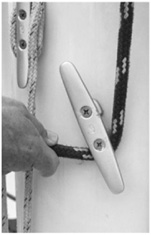
Contents
Acknowledgments
I gratefully acknowledge the help of a host of people in the yachting community all over the world. There are so many that I cant possibly thank them all personally here, but I must admit that I could not have written this book without their invaluable insights and contributions to yachting knowledge and literature over the years. The wisdom is theirs. The mistakes are mine.
Introduction
This is no ordinary encyclopedia. Admittedly, its encyclopedic in form and content because it touches on every important boating subject from A to Z. But its not written in the usual dry scholastic prose of an encyclopedia. This one is different. In refreshingly simple language, it informs, entertains, enlightens, and amuses.
It is nevertheless an authoritative, comprehensive guide that will help you solve many everyday boating problems. These alphabetically arranged entries and illustrations cover all aspects of boating, power and sail. They explain the mystery of how boats can sail against the wind, why the sea sometimes speaks with human voices, and why sailors think it unlucky to start a voyage on a Friday. They tell you how to dename your boat (so you can later rename it without suffering bad luck) and they reveal how good sailors earn the luck that keeps them safe at sea.
The subject matter has been arranged so that you can flip the book open at any page and find yourself following a fascinating trail from entry to entry of your choice. When you have a specific subject in mind, first look it up alphabetically, using the words you would normally use. If you dont find it there, go straight to the comprehensive index at the back of the book, which will guide you to the right place.
Running through the pages of this book is a thread of sensible hints and tips on everything from anchoring to zinc replacement. Youll find the explanations, definitions, and instructions here clear and helpful. This is a practical directory for practical people.
At the end of most entries youll find a cross-reference. If it says, for example, See also Boat Types, youll find additional information on a closely related subject.
A
Abandoning Ship
Why it may not be such a good idea in extremely bad weather
Youll often hear the old advice never to abandon your boat until you have to step up to the life raft. It sounds deceptively easy, but the only time it works is in reasonably calm water. People who advocate it as a general rule have obviously never seen an inflatable life raft performing its antics alongside a boat in a bad gale, rising and falling like an elevator gone mad, crashing and bashing against the hull, jerking and tugging and doing its best to puncture itself or break the painter and fly away like thistledown in the winter wind. Its up one moment, down the next, and then its disappearing forever over the swells to leeward.
Nevertheless, the principle is sound: Dont abandon your boat until you are absolutely, positively sure its going to sink. Too often, a partially waterlogged boat is found still floating months or years after it was abandoned, whereas those who actually managed to get into the life raft are never seen again. Trying to board a life raft in those conditions may be far more dangerous than staying with the boat.
Next page
